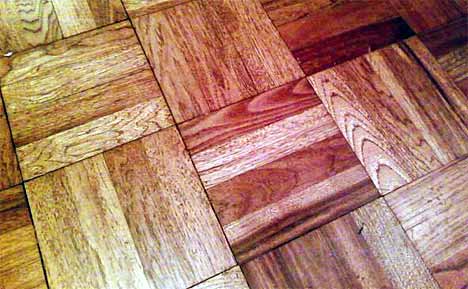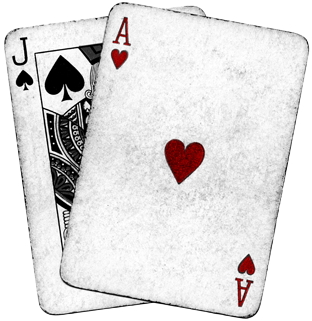I’ve finally gotten around to take some steps to fix my floor after the remodel. The other night my bro Hector came over to ponder the situation, do some math, and go over some options. Hector’s put hardwood floor down before, and has all the tools.
The immediate thought was to patch the floor to match the existing stuff. This is an obvious challenge, as the existing floor is 1945 red oak that was laid down when the house was originally built. So the differences in wood vintages combined with inevitable not-quite-close-enough stain matching attempts cast a quiet shadow over the success of the undertaking. On top of all that, there’s already some tricky geometry going: the wood is 2.25″ strips that are .75″ thick, but now that the wall’s gone, the rut isn’t divisible by 2.25. The builders did some tricks by ripping an additional 2.75″ rib, which they put in the hallway to at the point it met the living room.
So we hung out with a tape measure and discussed things. The verdict was for me to take the math and go hunt down 163 linear feet of 2.25″ red oak, along with another 18 linear feet of 3″ plank that we’d rip to 2.75″. I took my numbers, got some contacts through buddies in town, and hit the yellow pages. I quickly found that the stuff people are selling today in 2008 is all up to trend, consisting mostly of luxury pre-finished hardwoods in enough types and finishes to drive a nun to drink. Whatever I needed was not gonna be found in any retailer’s stock, since it’s only available through distributors. I was either gonna have to pay a retailer to find what I need, or continue an open-ended search that would probably end up involving warehouses in Rancho Cucamonga. Finding the proper unfinished wood was gonna be a chore, and take up quite a bit of time and energy.
In my frustration, I revisited the surface of an idea that started last year. I’d always thought it’d be cool to do a piece of art on the floor, but never really thought it through to any kind of conclusion. But now, with the frustration associated with hunting material, I started looking at the specifics. With math in hand, I figured, hey, howzabout I pull up strips of the existing floor and create a huge rectangle the length of the room, right under the beam, to do a design with in either tile or hardwood parquet. The oak strips immediately inside the door are rotted out anyway, requiring replacement, so I figured to just let the natural lines reveal themselves to me. It’s how I approached the soffit.
With that, I stared at the floor and its measurements. The area I’d pull up would be twenty of the 2.25″ strips, times the 23.5 foot length of the room. That leaves me with a rectangle roughly 23.5′ by about 4′. I started getting into art mode, which is where I feel comfortable. My zone. I don’t typically consider myself a very handy guy, but I’ve found that if you can take a home improvement gig and twist it into an art project, I’M THE DUDE YOU’RE LOOKING FOR.
And then, something divine happened. I pull up craigslist, do a quick search on parquet hardwood floor, and find an ad. Just a single, lonely ad. Somebody up in West Hills was selling over 250 vintage hardwood tiles from the fifties, by Bruce USA. The tiles were nine inches square, each consisting of four 2.25″ strips. Just like my floor. Plus, the stuff was .75″ thick, which is exactly what I need.
I call the lady, introduce myself, and she’s supercool. Tells me she and her hub are leaving tomorrow to travel for a year. I tell her I’m an artist, mentioning my intentions, and she’s overjoyed. “Get up here, I have tons of stuff for you,” she said. “I want them to have a good home.”
I make the hour-long trek after traffic, and roll up to her place at a little after 9PM. Here’s where the long story starts getting shorter: I SCORED. Not only tons of the exact hardwood I need, but also some other items, including some wall panel tiles and a groovy Infinity Mirror that I just saw somewhere for $800.
But that’s just the beginning. I was now able to take my math and convert it to 9″ units. Twenty of the 2.25″ strips equals 45″, and five of the 9″ tiles also equals 45″. PERFECT.
So my rectangle is to be five tiles by 32 tiles. This screams design possibilities, since 32 is a binary number. If you count in binary from 0 to 31, it’s exactly 32 tiles.
So to wrap up this unfathomably long-winded blog entry about what I did last night and what I plan to start this weekend, I am gonna take the tiles, sand ’em down, stain half of them ebony, and keep the others natural. Taking the Universe’s cue of the significance of 32, here’s where we’re going. The front door will open up at the bottom left of this design; you’ll essentially be stepping onto 0, 1, 2, 3, 4, and 5 as you step into the house:

Here’s what the wood looked like when it was laid down and stained:

And finally, my buddy Alisa after directing me for an hour and a half like a well-intending drill sergeant as I loaded my truck to the gills:

To be continued…










This topic was a natural springboard for another typical conversation that Andreas and I engage in often. Andreas, an Applied Math guy, was given an exceptional mind by way of genetics from his Nobel dad, Niels Kaj Jerne.
I know that I’m gonna want to revisit our convo someday, so here it is for permanent record:
So it’s:
OOOOO – 0
OOOOX – 1
OOOXO – 2
OOXOO – 4
OXOOO – 8
XOOOO – 16
OOOXX – 3
OOXOX – 5
OOXXO – 6
OXOOX – 9
OXOXO – 10
OXXOO – 12
XOOOX – 17
XOOXO – 18
XOXOO – 20
XXOOO – 24
OOXXX – 7
OXOXX – 11
OXXOX – 13
OXXXO – 14
XOOXX – 19
XOXOX – 21
XXOOX – 25
XOXXO – 22
XXOXO – 26
XXXOO – 28
OXXXX – 15
XOXXX – 23
XXOXX – 27
XXXOX – 29
XXXXO – 30
XXXXX – 31
Been drawing up your arrangement. What exactly is symmetrical about it? I’ve gotten to about XOXOX, way past the midpoint, and I’m not really seeing a pattern.
=j
Aaaaah…
Curious how you came up with that. If you can put it into English, I’d be fascinated with the thought process.
=j
Nice. Kinda like Toss Across with the beanbags!
Very Tao.
=j
LOL
=j
Just pulled up the twenty 2.25″ strips and am beginning to see where the tiles are gonna go. Check it out.